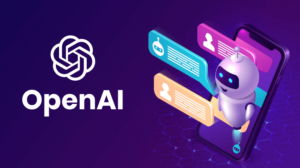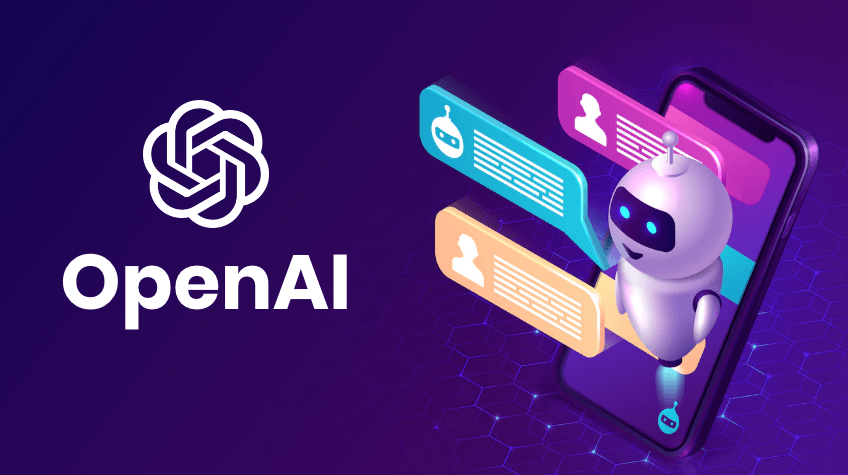Bing Search to Feature ChatGPT by March?

Microsoft and Open-AI announced a plan for ChatGPT to be added to Bing Search. This tool will use machine learning to analyze the content of a conversation. It will then attempt to create text that looks authoritative but is actually incorrect. These incorrect results can affect search traffic and cause poor SEO.
It is a text analysis application:
OpenAI, a Silicon Valley-based artificial intelligence research company, has released ChatGPT, a text analysis tool for Bing Search. It has received mostly positive comments.
GPT 3.5 technology is used by the chatbot to generate natural language texts. These texts are generated in response to written prompts. A German teacher, Hendrik Haverkamp, used ChatGPT to reassess an exam question.
The company behind the ChatGPT bot, OpenAI, is led by Sam Altman. Microsoft invested in this startup last November. However, the company declined to comment.
The company has been training its chatbot with a large collection of texts. Logging in with a Google account or Microsoft account is all it takes to try the service. Some of the results may be inaccurate.
ChatGPT is designed to answer a wide range of questions, including programming and general knowledge queries. It has a very realistic conversational style.
Although the platform has been well received so far, there are a few issues. The bot can sometimes produce incorrect answers or nonsensical responses depending on how it’s trained. Some grammar errors have been reported, but otherwise, the text is clear.
In some cases, the bot might have generated phishing emails. This is not a serious problem yet, but it does indicate that ChatGPT has produced some incorrect content.
However, the platform has produced some interesting things, such as essays, which show that it can generate human-like text. Students have used the chatbot to write college essays and to answer take-home tests. This type of NLP technology is a boon for businesses. However, business leaders need to monitor its progress.
ChatGPT can trick users into providing false information. Before using the tool make sure that you have permission to use it. If you are unsure, contact the copyright holder for more information.
ChatGPT will ultimately help usher in a new generation of products. ChatGPT will eventually be a tool that complements humans. It may not be able to answer all questions accurately, but it can answer complex questions.

It can produce text that sounds authoritative but is actually incorrect:
Rarely do I find common ground in my life with Elon Musk, he and others have made predictions that make me feel… “a bit uneasy?). AI experts warning us that “we are creating God” was once easy to dismiss.
While I’m proud of my predictions I’d love to be wrong. It would be a great thing for humanity to have a slow and quiet year in the AI industry. We would have enough time to adapt to the AI challenges, study our models and learn how they work and fail.
ChatGPT is an innovative computer program that generates texts based on a series of written prompts. It may sound authoritative, and make sense, but it’s not always right.
OpenAI, a San Francisco-based company that specializes in artificial intelligence research, has created ChatGPT. The company’s mission statement is to create safe general Intelligence Systems.
ChatGPT runs millions of pieces of training data. Some of this data is generated by humans, but the majority comes from the internet. This allows the model to simulate human-like interaction. But it also shows the ugly side of human behavior.
Specifically, it produces text that sounds and looks like human writing. It also makes use of a “large language model,” developed by OpenAI using machine-learning techniques.
ChatGPT is already being used by many people. These include Twitter users that have developed clever applications of ChatGPT. For instance, the bot has been used to write professional-grade emails and compose a pitch for a Hallmark Christmas movie.
Some people are concerned about the possibility of bias. There are many examples, including a scary article that was based on a vaccine that has never been published. Another is the bogus source material for an article claiming the COVID-19 vaccine was effective in two out of every 100 people.
There’s also the issue of racial or gender bias. While it’s a given that a computer is more literal than a human, it’s important to remember that the output of a generative AI is not a true representation of reality.
Unlike other types of AI, a generative system can create text that sounds like it was typed by a real human. Moreover, a generative system can produce a better answer to a specific question than the average chatbot. This is a significant improvement over earlier technologies.
It’s not a replacement for Google, but it is a step forward. It may be a valuable tool to educators and students if it is able to deliver more engaging dialogue than previous versions. We don’t know what it will do for us and we don’t have any clear plans.
It decreases search engine traffic (like, potentially A LOT):
ChatGPT is generating a lot more buzz in search marketing. It’s an AI-powered tool that can answer questions, write poems, create meta-descriptions, and generate content for websites. It can also improve customer service. It’s not perfect. One of the biggest flaws of the system is that it doesn’t have direct access to Google or Bing. This means it cannot use its data to provide answers. This may change in the future.
Despite its shortcomings, however, the chatbot is a potential game changer. Analysts think it could steal users from Google, disrupting the company’s search business model. ChatGPT and its potential impact on search optimization are the topics of many conversations. Before making a purchase, you need to be aware of its capabilities. These tips can help you make the most of the tool and save you time.
ChatGPT provides useful insights but is not the only way to solve all your search-related questions. You need more than an AI chatbot to make the most of your content-creation strategy. It’s important to take a step back and evaluate the tool’s strengths, and drawbacks.
The chatbot can answer questions such as how to pack a suitcase. It can also suggest synonyms for PPC campaigns. It can’t distinguish fact from fiction. The bot will give the wrong answer if a user asks about the best hair shampoo for curly hair.
Lastly, you might have heard that the ChatGPT system is still working on some of its flaws. It’s worth checking the latest updates to ensure accuracy.
ChatGPT’s disruption of the current search engine landscape is undeniable. But it could cause significant changes in the business model. Marketers will need to test different campaign variants and evaluate the effectiveness of tools like this. Adapt as we always have.
A good AI-powered tool should be able to provide you with the information you need while enhancing your bottom line. Stay ahead of the curve and keep up to date with the latest advances in artificial intelligence, machine learning, and other technologies.

It often lacks modern/up-to-date information:
You’ve probably noticed a vastly different feeling than you expected when you spent the past few weeks exploring ChatGPT. ChatGPT is not just a tool that answers questions. It can also be used for playing with text. It can generate computer code and explain complex scientific concepts at different levels of difficulty.
However, there are some problems with how this technology works. It lacks a knowledge base, making it difficult to verify that its results are accurate. It is impossible to determine if the bot misunderstood a user’s intent or if it is just making a guess.
ChatGPT does not source its training data from legitimate sources. Instead, it’s largely taken from the internet. It’s bad because of three reasons. It reflects the ugly side of human behavior. It is not true to the original material. And third, it does not give you any guarantees that the information it produces will be correct.
ChatGPT’s output is also formulaic. In other words, it doesn’t have the imagination to create original content. Instead, it writes text that is logical and formulaic in structure. This lack of creativity can be especially problematic in a world that is prone to online cheating. If a bot is unable to understand a text piece, it is more likely than a human to produce misleading information.
As for security, it’s too soon to assume that ChatGPT is safe. The bot can’t be used alone and must be part of an existing conversational artificial intelligence platform. There are still ways to get around the security guardrails even after all that. Users have found out how to turn off the safety features of the software, and have come up with a number of workarounds. ChatGPT safety evaluation is a complicated process that involves a variety of stakeholders including consumers, policymakers as well as regulators.
I’ll update this post as necessary with new information as I get it.
jesse@searchmarketingagency.com
www.SĖO.com + www.SĖM.com (coming soon)
www.LinkedIn.com/in/jessewitham


